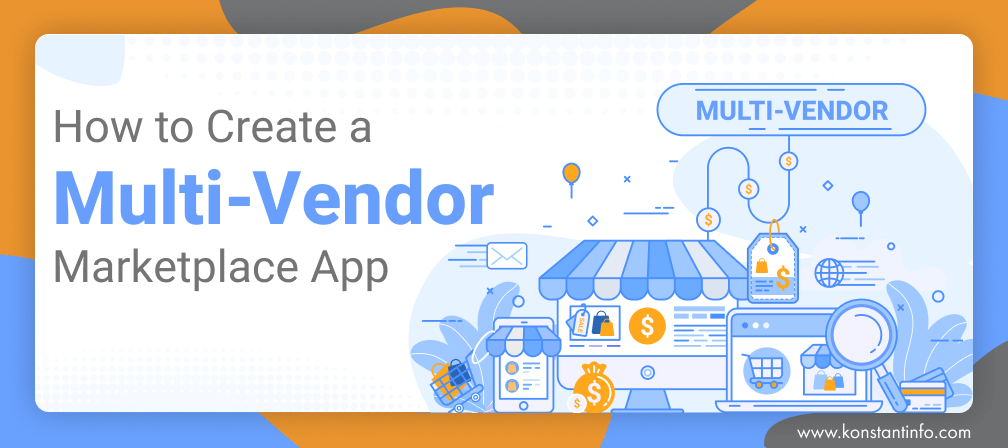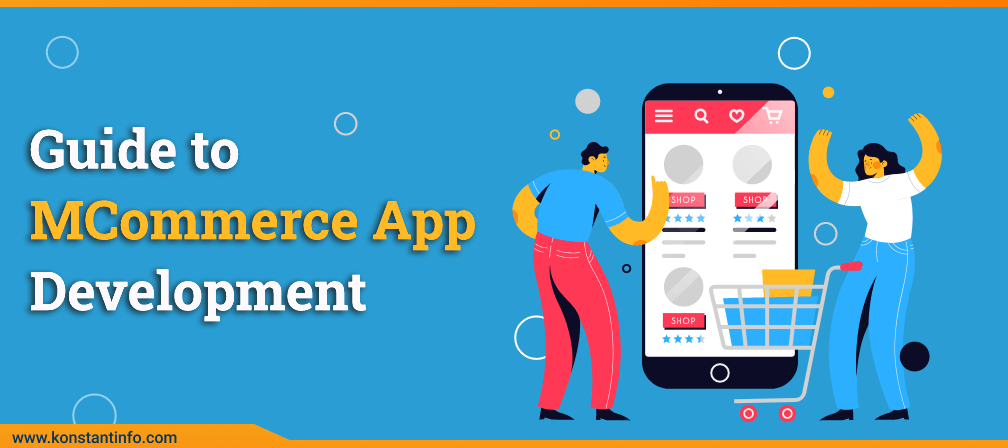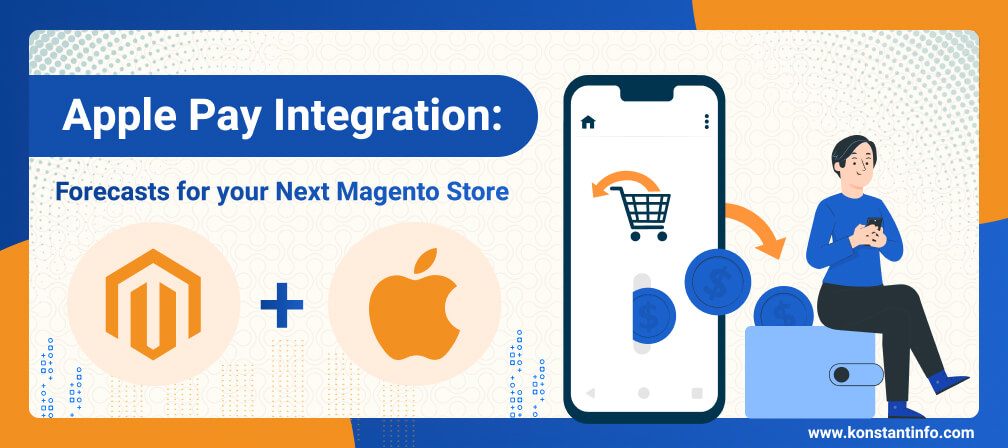Marketplaces are always two-sided having buyers and sellers. Sellers bring with the supply to inventory that sits with them in the middle of the marketplace. Buyers bring the demand and then the transaction follows with the liquidity. For eBay the “product” sits in the middle, for Airbnb, “spaces” are transacted in between and in case of Eventbrite the “events” are the transactions that happen in between.
What Is A Marketplace Platform?
Online Marketplaces are the platforms that allow independent sellers to list their goods or services. The pricing depends upon the location and purpose of the marketplace. Marketplaces help bridge the gap between the buyers and sellers.
What Are Multi Vendor Marketplaces?
A general marketplace enables transactions between a buyer and a seller and further with the customer. A multi vendor marketplace platform enables customers to buy products from different suppliers. Multiple vendors can sign up on the e-marketplace platform, display their items, and transact across with the customers.
Multi Vendor Marketplace Examples
Marketplaces are some of the most valuable internet businesses. Some of the premier marketplaces include Amazon, Alibaba, Uber, eBay, Didi Chuxing, Airbnb, Flipkart, Lyft, Zillow, Houzz, Thumbtack, Nextdoor, Zomato, Amazon, Flipkart, Snapdeal, Ajio, Grofers, Paypay Mall, eBay, Mercado Libre, Aliexpress, Rakuten, Taobao, Walmart.com, JD.com, Etsy and many more.
Can We Classify Marketplaces?
| By Target Audience | Business-to-Business (B2B) | This approach brings more customers to sellers and expands their reach. |
|---|
| Business-to-Customer (B2C) | In this approach products and services are sold directly from businesses to customers. |
|---|
| Peer-to-Peer (P2P) | In this approach the marketplace lets customers share products and services to sell. |
|---|
| By Focus | Vertical | This approach caters to a certain business niche, which helps in efficient promotion across the target audience. |
| Horizontal | With this approach, consumers get access to different goods and services. |
| By-Products | Products/Goods/Items | This is the most common type of marketplace that features products offered by sellers with Amazon and eBay as the major players. |
| Services | This approach is aimed at those who are looking to hire some kind of service like repairing, transportation, household, car and apartment rentals, beauty/medical services, and IT services. Best examples include: Uber, Airbnb, Upwork, and TaskRabbit |
| Projects | This marketplace approach used crowd-funding to arrange funds for start-up projects like fundable, Kick-starter, Indiegogo etc. |
| Hybrid | This marketplace approach offers both services and products such as OLX, Craigslist and Oodle etc. |
| By Interaction | Online to Offline | This marketplace approach strives on creating a seamless digital experience for their customers that often converts into real-life experience, making them interested enough in their products and services to brick them to their physical stores. |
| Online Commerce | This marketplace approach is aimed to conquer markets through Data Interchange that requires suppliers and customers to set up a dedicated connection in which the products are advertised for the customers to buy. |
What Makes Marketplace Businesses So Valuable?
This is particularly because they have achieved marketplace liquidity. “Liquidity is the reasonable expectation of selling something you list or find what you’re looking for.” – Simon Rothman, Greylock – a notable marketplace expert. Liquidity brings cross-side network effects with it which affects both buyer and seller.
When the strength of one side has effects on the growth of the other – as more sellers join a marketplace, they provide more inventory that buyers come in to seek out and when more buyers come to the platform to seek out those items, more sellers want to come and list their items for sale and this goes on.
This virtual cycle kicks in and has many positive benefits, some of which being…your cost of customer acquisition tends to go down, the amount of revenue you can make per user tends to go up and your retention also tends to go up which creates very defensible forces around the marketplace.
To summarize, “The only feature that mattered was that everyone was there. Whoever gets the network effects first, wins.” – James Currier, NFX Guild.
How Should You Start A Marketplace Business?
It goes around these three steps: Start with Basics -> Gain Traction -> Scale Up
So every marketplace has the initial start-up challenge of classic chicken and egg. You start by building supply or by building demand, how do you get one when you don’t have any one of the other? How do some marketplaces gain traction while others don’t?
And there are many different beliefs in this area, but we will find the best results when we start with the supply side. As driving demand before you have supplied is like driving shoppers into a store with empty shelves. The first experience matters. In online e-commerce stores, the shipping speed and delivery matters as much as the logistics and inventory. Building supply might sound a bit counterintuitive as it requires seeking out inefficient, fragmented supply that you can roll-up. So fragmentation plus high friction for supply sign up is positive. So if you are thinking to create an online marketplace and if you’re lucky enough to find a readymade database online and a list of all of the suppliers, if it’s too easy, there are chances that it hasn’t been done before.
What Strategies And Tactics Can Help Grow Supply And Demand?
Strategies
- Following the Trojan Horse Strategy can act as a backdoor to building a marketplace. It works around first building your product that serves your target supply customer. After rolling up supply, later drive demand to start the flywheel. If you can monetize the transactions going on at the supply side can help in bootstrapping the marketplace before you even start materially driving demand?
- To start with your very first website, do your research, crawl the web, use the technology to structure the data and categorize them by protocol, and then use Amazon Mechanical Turk to help to answer questions like – for what area do they (the business for which you are creating the website) work in, how much they charge per hour, what are their specialties. Then you are off to build the website, publish it to the web, and invite the business to claim and augment the information. This can be a highly effective way to roll up the supply side.
- But the most scalable tech-driven approach doesn’t always win. And it sometimes takes brute force, like a 300+ person remote team. As an example, Thumbtack’s approach to building the supply side and local services was to manage a pretty large team to manage the emails, invite the service providers on their platform, engage them into a dialogue if the service pros had any questions and this has the potential to be successful in the long run.
- Additionally, timing and story that people want to hear can especially go a very long way. So there are many different approaches. You need to find out what works for your business.
Tactics
- It is very important to track satisfaction for both supply and demand. You can borrow goodwill from one side to help the other more constrained side of your marketplace. TaskRabbit started as a lightly managed and bidded marketplace. Consumers can come to their site, post the tasks that they needed to be done. The Taskrabbit could choose which task they wanted to complete like the price they wanted to do it and it was all very loosely managed. The benefit of this was that on the supply side, Taskers loved it due to flexibility to bid on any job they were willing to do based on their skills, regardless of totally whether they were qualified to do so, they could charge any price that they want and Net Promoter Service (NPS) score on this side of the marketplace were extremely high.Consumers loved it too, but they only loved it when they made a match when they connected with someone who could do their job well. What caused slight friction in the bidding model was, “Will my task get matched?”, “Am I paying a fair rate for the job?”, “Will this job gets fulfilled?”, “Will anybody bid on this?”. Then they claimed a new model to go about their tasks. It involved no bidding and tighter matching of skills and availability, hourly rate instead of one-month fee for each task and eventually, this led the company on the right path. Taskrabbit learned from its big backlash. Its users revolted as the company shut down its bidding systems. This eventually led the demand side to be much happier with the new model. It solved the core demand-side pain points (matching, speed, skills/quality, It shifted surplus goodwill from the supply side to the demand side, growth has re-accelerate which was very positive for them.
- Another tactic in the marketplace can be to get your supply-side customers to promote your brand can be worth more than 1000 marketing campaigns. Branded grocery bags (Instacart), logoed shirts (TaskRabbit), stickers (Yelp) as offline eventualism to promote your brand and open table reservation ticket widgets, embedded in third-party sites (Opentable) or open table drop a query on your website or the vanity like Thumbtack uses like “Hey I am a top service professional”, that vanity can go a long way in carrying your brand across people.
- Looking for organic overlap between buyers and sellers in the market can be incredibly powerful. If that happens organically, then there are ways to lean into that.
What Features Should You Include In Your Marketplace App?
As businesses try cutting their operational costs, they essentially need to consider saving some on their operational costs, purchase costs, and simultaneously improve employee productivity.
- GST Invoice for Input Tax Credit – Claim GST input tax credit and save some on your business purchases
- Business Deals and Bulk Discounts – Give a chance to save more with exclusive deals for businesses and discounts on multi-unit purchases.
- Fast and Reliable Shipping – Leverage your logistics and give a chance to access fast and free delivery to your prime customers.
- Buying Guarantee – Give your customers complete satisfaction with a guarantee on their every purchase.
- Easy Returns and Replacements – Save time with hassle-free purchases with easy returns and replacement policies.
- Account Security – Allow businesses to add their partners to their accounts for making business purchases instead of sharing their login credentials.
- Exclusive Deals
- Notifications – Get Notified on Upcoming events
- Discounts – Price wise Discounts/Category wise Discounts/Lucky hour deals
How to Choose the Right Technology Stack to Create an Online Marketplace?
Let’s look at the examples of what technology stack do famous marketplaces use:
- Airbnb is now built on Ruby on Rails in the back-end and React.js in the front-end
- Uber has chosen Python, Go, and Java combined with Fusion.js
- Etsy works on PHP and Backbone.js
- com works on Java, C++, and Angular.js
- Fiverr uses Ruby on Rails and React.js
(For Illustration)
- Programming languages: Java, PHP, and Python.
- Mobile development:Android – Java, iOS – Swift, cross-platform – React Native
- Front-end: Angular, ReactJS, HTML5, CSS
- Back-end: js
- Infrastructure: Amazon Web Services
- Analytics: Google Analytics
- Marketing Automation: HubSpot, MailChimp (for e-mails)
- Databases: PostgreSQL, MySQL, MongoDB
- Payments: Stripe, Braintree, and PayPal
- AI and Machine Learning for Virtual Assistants
How Should You Convert Your Marketplace into A Multi Vendor Marketplace?
Webkul is open-source marketplaces that craft plugins for open source communities, including Web plugins, E-Commerce marketplace software, OpenERP, Odoo connectors, dropship, mobile apps and a lot more. Using a multi-vendor marketplace extension by Webkul will convert the default Magento store into a complete multi-seller e-commerce marketplace platform like Amazon, Alibaba, Rakuten, Etsy, Souq and more. Multi Vendor marketplace extension by Webkul will enable customers to shop from a huge collection of products and services sold by various marketplace sellers.
How Is The Marketplace Important?
Marketplaces allow vendors to sign up, create a seller storefront account, view dashboard, add different categories of products, manage orders, create an invoice, credit memo and structure shipment.
Online Marketplace Features
Marketplace Owner/Store Admin Features
- Store Marketplace should be attractively designed should be scalable to include more features according to the requirements in future.
- Online storefront should be enabled to manage the products, sellers, and commission.
- The administrator of the e-storefront should be able to customize email notification templates.
- Admin should have the right to select and customize different layouts for the landing page of the online marketplace.
- The administrators should be made to assign the products in bulk from the products assignment page and must also be allowed to edit the seller page from the backend panel.
- Admins should be able to set product limits for the customers with each purchase.
- The admin should be given access to approve or disapprove the seller.
- The admin can view, approve, disapprove, update, or delete a product requested by the seller
- There should be an option to enable a different percentage of commission to different sellers
- The AJAX/JS on the admin storefront/dashboard should be able to check for the vendor/seller shop URL.
- The admin should be able to auto-approve orders.
- The admin should be able to manage the seller profile page setting.
- The admin should be able to hide seller-buyer information.
- The admin should have the right to allow the seller to add related products, up-sell products, and cross-sell products.
- The administrator must be able to view the notification count for new seller requests, add/edit seller products, and feedback review.
- SKU prefix should be set for the admin to be able to differentiate the seller’s products.
- Admin should be able to control product previews for product approval at their end.
- Admin should allow the vendors to provide information store wise.
Vendor/ Marketplace Seller Features
- The seller should have a separate profile page containing the company logo, a collection page with a company banner.
- The vendor panel should feature an interactive vendor dashboard with access to the customer grid, reviews, and activities.
- Vendors must have the right to view all transactions (total earning, total admin commission, total payout, total sales and remaining payout) on their panel.
- The sellers should be able to view the total earnings of their store Day, Month & Year-wise with the help of a vivid chart & grid representation.
- Vendor panel should allow withdrawal request for the remaining amount, must allow adding different product types to the seller (simple, downloadable, virtual, configurable)
- Sellers should have the option to configure products with available attributes-key features.
- They must be allowed to edit the shop URL for the profile page, review page, collection page, and location page.
- Vendors should select checkboxes for enabling the social media fields on the seller’s profile page.
- Admin must enable the seller to manage the order from the front-end.
- The seller must get notified if the inventory level goes down to a minimum.
- Changing background colour, adding carrier, tracking numbers, adding product images, adding videos, displaying sales report, checking sales by location, sales statistics, filtering the reports by days/months/years, notification counts, creating a duplicate copy of the product must be part of seller dashboard.
- Sellers panel should be SEO friendly.
Customer Panel Features
- The customer dashboard should have all the details provided by the seller.
- They must be able to contact the seller with captcha support.
- Customers must be able to locate the sellers, view their profile, contact them, view their ratings, give ratings, send a request to the administrator to become a marketplace seller, and be able to check out products of multiple sellers in the shopping cart.
What Monetization Models Should Be Followed To Create An Online Marketplace?
Sellers can choose from amongst these 5 business models: to create an online multi-vendor marketplace:
- Commission (ebay, Etsy, Feverr)
- Listing Fee (Craigslist, Etsy)
- Subscription fee (used by Netflix, LinkedIn, Venuu)
- Advertising (used by Google Ads, facebook, twitter)
- Featured listings (used by Zillow, Google)
Money and Time Estimation: How Much Does It Cost To Create An Open-Source Marketplace?
According to an average estimation, a generic marketplace can be created in $1,000 – $1, 50,000 depending upon the chosen approach. Such a multivendor marketplace app can be created in a day with SaaS or MaaS technologies.
A multi-vendor marketplace platform with complex functionality may cost up to $1,80,000
What Process Should You Follow Once Your Marketplace App Is Ready?
We have online marketplaces everywhere these days. It not only gives chance to the local vendors turning into sellers and grow their business online but also allows managing business quickly and easily in simple steps. Simply,
- Register your seller account
- Upload your product listings and go live
- Start receiving orders
- Ship and deliver the products to the customer
- Receive your payments
You Need To Have
- An active bank account for payments
- GST and PAN details (applicable in India)
Conclusive: Need Help in Creating The Best Multi-Vendor Marketplace?
We hope that this illustration brought some clarity. Have some particular idea or a technology or a timeframe in mind, let us know and we will assemble the best package customized according to your requirements.



